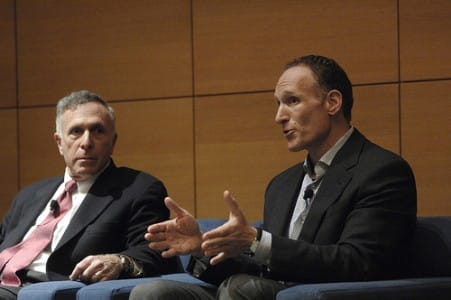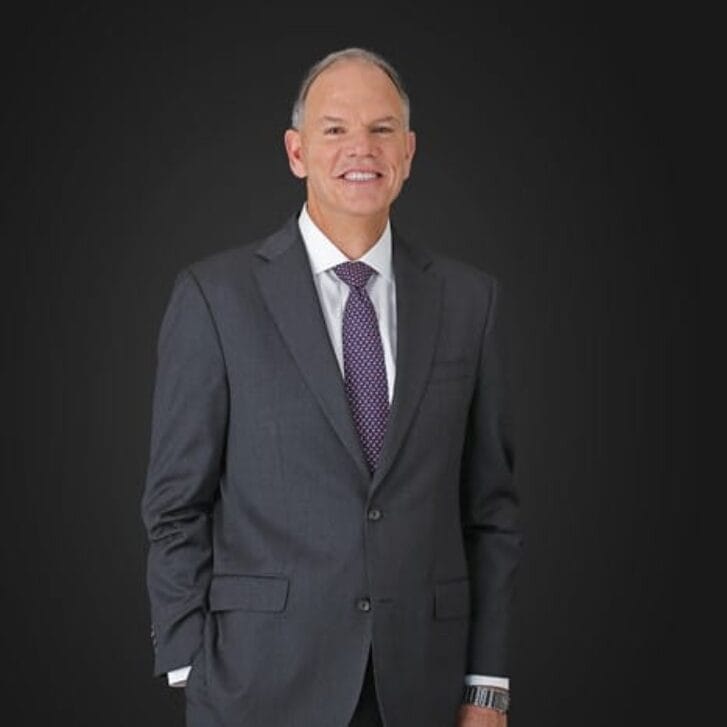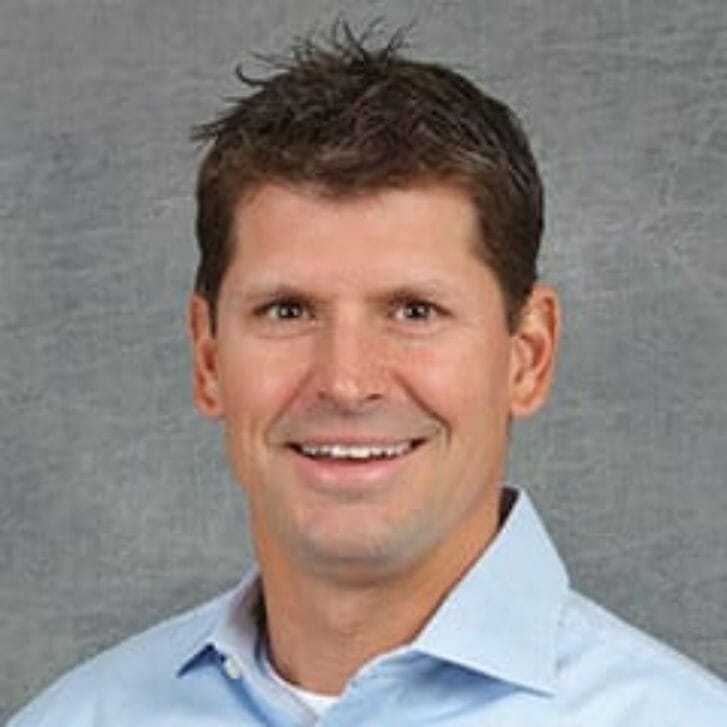It was not so much a lecture as a stream of consciousness conversation between father and son. Albeit, it was an elevated level of consciousness that focused on the topics of sports, negotiations, ethics and more. And this wasn’t just any father and son. It was Ron and Mark Shapiro, the one a guru of professional sports negotiations and chairman of the Shapiro Negotiations Institute and the latter the president of Major League Baseball’s Cleveland Indians. Both spoke as part of the Wharton Leadership Lectures series.

Ron and Mark Shapiro, left to right. Photo credit: Alyssa Cwanger.
The conversation weaved, bobbed and cut on a dime as gracefully and entertaining as some of the on-the-field (or court) plays of athletes that the men work with professionally. Here are some of the more intriguing tidbits that scored in the takeaway column:
• Negotiations as partnerships: As Shapiro the elder said, “In order to get what you want, figure out what they want.” Or, put another way, maximize your results while making sure they are acceptable to the counterparty. In Major League Baseball, where there are only 30 teams and a handful of agents, building relationships is all the more important, said Mark.
That does not means it’s all “kumbaya,” added Ron, “I have to scrape for everything I can get.”
• Value-based negotiation: Ron claims to have closed more deals in professional sports than anyone else where the player took an offer other than the highest bidder such as Cal Ripkin Jr. who opted to stay with the Baltimore Orioles his entire, historic career. How does he advise his clients then? “A deal is about life and what you want to achieve in life,” he said. Secure that instead of just chasing dollars, and then you do not have “to be at sea with your life.”
Of course, he’s had clients not buy into that, such as Alex Rodriguez, who went with agent Scott Boras and became the highest-paid baller with the New York Yankees. The elder Shapiro claimed, no one is now less respected by other players than Rodriguez.
•Value-based leadership: Mark noted that the fans will cheers for a player when he scores and wins in a game, regardless of what kind of a person he or she is off the field. But Shapiro the younger aims to put together a team to “stand for something.” Winning with “good guys,” as the Cleveland Indians did in 2007, is all the sweeter. And all employees of an organization, he said, want to buy in to this vision, rather than just “buy into a hat.”
• A “leader’s checklist” is essential: Much like Michael Useem, the William and Jacalyn Egan Professor of Management, prescribed in his recent Wharton Digital Press book, The Leader’s Checklist, Ron requires all of his negotiators to go into deals following his checklist: clearly stated objectives, learning precedence and studying the counterparty’s tendencies, considering alternatives and the interests of the party, learning the team biography, strategizing and scripting.
For Mark, preparation is one of the biggest steps. The Indians, for instance, keep records of every conversation they have ever had with an agent.
All four tips can surely be applied elsewhere than sports. It is said that it is good to learn from one’s mistakes but better to learn from someone else’s.
“I’m the master of mistakes,” Ron Shapiro offered. “I’ve made them all.”
He writes and speaks in public to share what he’s learned from them.

























